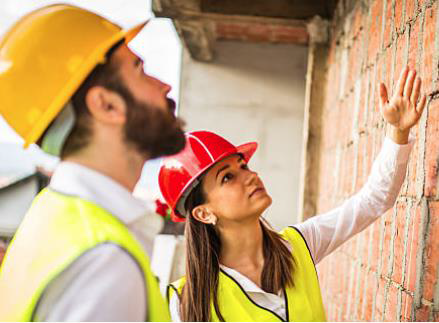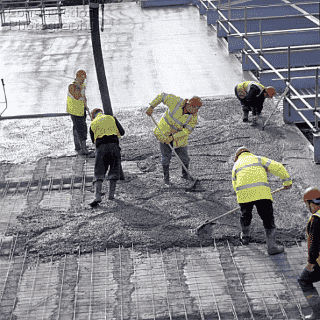COURSE OVERVIEW
SE0030-4D : Durability of Reinforced Concrete Structures Assessment, Repair & Risk-Based Inspection

OVERVIEW
| COURSE TITLE | : | SE0030-4D : Durability of Reinforced Concrete Structures Assessment, Repair & Risk-Based Inspection |
| COURSE DATE | : | Oct 27 - Oct 30 2024 |
| DURATION | : | 4 Days |
| INSTRUCTOR | : | Mr. Steve Magalios |
| VENUE | : | Al Khobar, KSA |
| COURSE FEE | : | $ 4500 |
| Request For Course | ||
OTHER SCHEDULED DATES
Course Description
Nowadays, there is a large stock of reinforced concrete structures such as commercial buildings, marine structures, bridges, water transportation pipelines, waste water treatment plants etc, which are all beginning to show signs of deterioration, particularly those over 30 years age. Collapses, premature demolitions, unforeseen extensive maintenance work all over the world created great concern about the durability and safety on the reinforced concrete structures.
The Middle East construction boom will be affected without better concrete quality and protection. The service life of reinforced concrete structures is significantly lower in the Middle East than in other parts of the world. There is a tendency to use a ‘trial and error’ approach to materials and processes which have not been standardised or fully tested as these processes are applied without supervision, which results in poor service life. Therefore, a more professional approach is needed, with special attention to the entire service life, starting from the design phase.
The root of the problem lies in a number of factors, including:
•
The harsh, high salinity of the environment in the Middle East.
•
Designers specifying concrete in an insufficient manner
•
A workforce in the Middle East dominated by the expatriates with differing qualifications, knowledge, training and experience.
Engineers need therefore newer and more suitable solutions to prolong the service life of new structures, both using supplementary preventative techniques and adopting efficient maintenance and repair techniques.
As far as the use of supplementary techniques is concerned, this course gives updated suggestions for the use of stainless and galvanized steel, for the adoption of cathodic prevention systems, for the use of particular surface treatments and for the use of corrosion inhibitors in the mix: all described measures are able, in controlled conditions, to strongly prolong the service-life of the new constructions.
In case of existing structures with corrosion problems, maintenance may be performed by means of electrochemical techniques, such as chloride removal and realkalization, or with conventional repair methods. However, only cathodic protection is considered a suitable and reliable means for ensuring the corrosion stopping.
In case of existing structures with concrete damage problems, rehabilitation may be performed by means of several techniques, including the protection against aggressive substances, the moisture control, the strengthening of components, and the improvement of physical and chemical resistance of the concrete.
The development of cost-effective strategies for maintenance of reinforced concrete structures necessitates the acquisition of reliable information on the extent and rate of damages. If the corrosion risk of the reinforcement is detected sufficiently early, damage can be avoided or reduced significantly, residual life of the structure predicted and relatively simple maintenance measures or repair systems can be used.
Although reinforcement corrosion and concrete damage are recognized to be deterioration processes with important economical consequences, their effective measurement is actually very scarce.
The course will provide updated information on diagnosis of the reinforced concrete structures at different levels, starting with a simple or low-level form of periodic visual inspections, until the use of sensors for the new and existing structures. The course therefore covers the principles of a wide range of the latest techniques and illustrates practical applications related to the use of equipments for corrosion and mechanical testing and monitoring in concrete structures on site. These modern techniques can provide rapid and sensitive measurements and detection of damages in concrete structures.
Experimental tests will enable the participants to gain hands on experience in using the state-of-the-art equipment for corrosion testing and monitoring in concrete structures.
The Middle East construction boom will be affected without better concrete quality and protection. The service life of reinforced concrete structures is significantly lower in the Middle East than in other parts of the world. There is a tendency to use a ‘trial and error’ approach to materials and processes which have not been standardised or fully tested as these processes are applied without supervision, which results in poor service life. Therefore, a more professional approach is needed, with special attention to the entire service life, starting from the design phase.
The root of the problem lies in a number of factors, including:
•
The harsh, high salinity of the environment in the Middle East.
•
Designers specifying concrete in an insufficient manner
•
A workforce in the Middle East dominated by the expatriates with differing qualifications, knowledge, training and experience.
Engineers need therefore newer and more suitable solutions to prolong the service life of new structures, both using supplementary preventative techniques and adopting efficient maintenance and repair techniques.
As far as the use of supplementary techniques is concerned, this course gives updated suggestions for the use of stainless and galvanized steel, for the adoption of cathodic prevention systems, for the use of particular surface treatments and for the use of corrosion inhibitors in the mix: all described measures are able, in controlled conditions, to strongly prolong the service-life of the new constructions.
In case of existing structures with corrosion problems, maintenance may be performed by means of electrochemical techniques, such as chloride removal and realkalization, or with conventional repair methods. However, only cathodic protection is considered a suitable and reliable means for ensuring the corrosion stopping.
In case of existing structures with concrete damage problems, rehabilitation may be performed by means of several techniques, including the protection against aggressive substances, the moisture control, the strengthening of components, and the improvement of physical and chemical resistance of the concrete.
The development of cost-effective strategies for maintenance of reinforced concrete structures necessitates the acquisition of reliable information on the extent and rate of damages. If the corrosion risk of the reinforcement is detected sufficiently early, damage can be avoided or reduced significantly, residual life of the structure predicted and relatively simple maintenance measures or repair systems can be used.
Although reinforcement corrosion and concrete damage are recognized to be deterioration processes with important economical consequences, their effective measurement is actually very scarce.
The course will provide updated information on diagnosis of the reinforced concrete structures at different levels, starting with a simple or low-level form of periodic visual inspections, until the use of sensors for the new and existing structures. The course therefore covers the principles of a wide range of the latest techniques and illustrates practical applications related to the use of equipments for corrosion and mechanical testing and monitoring in concrete structures on site. These modern techniques can provide rapid and sensitive measurements and detection of damages in concrete structures.
Experimental tests will enable the participants to gain hands on experience in using the state-of-the-art equipment for corrosion testing and monitoring in concrete structures.
TRAINING METHODOLOGY
This interactive training course includes the following training methodologies:
LecturesWorkshops & Work Presentations
Case Studies & Practical Exercises
Videos, Software & Simulators
In an unlikely event, the course instructor may modify the above training methodology for technical reasons.
VIRTUAL TRAINING (IF APPLICABLE)
If this course is delivered online as a Virtual Training, the following limitations will be applicable:
| Certificates | : | Only soft copy certificates will be issued |
| Training Materials | : | Only soft copy materials will be issued |
| Training Methodology | : | 80% theory, 20% practical |
| Training Program | : | 4 hours per day, from 09:30 to 13:30 |
RELATED COURSES

SS0628 : Conflict Management
- Date: Jan 26 - Jan 30 / 3 Days
- Location: Doha, Qatar
- Course Details Register

SE0310 : Concrete Structural Design, Maintenance & Reliability Analysis for Industrial Projects & Process Facilities
- Date: Jan 20 - Jan 24 / 3 Days
- Location: Abu Dhabi, UAE
- Course Details Register

SE0009 : Certified Construction Management (CCM) (CMAA-CCM Exam Preparation Training)
- Date: Feb 09 - Feb 13 / 3 Days
- Location: Dubai, UAE
- Course Details Register
